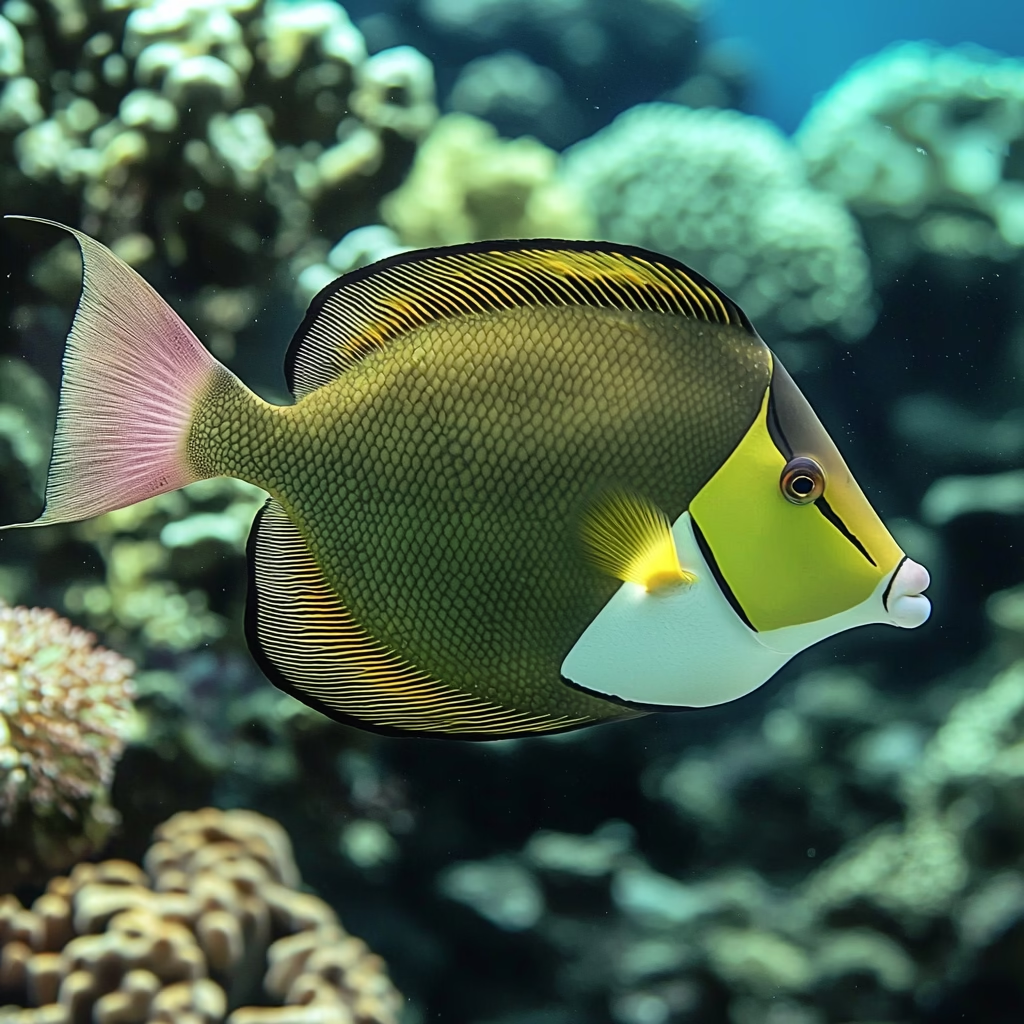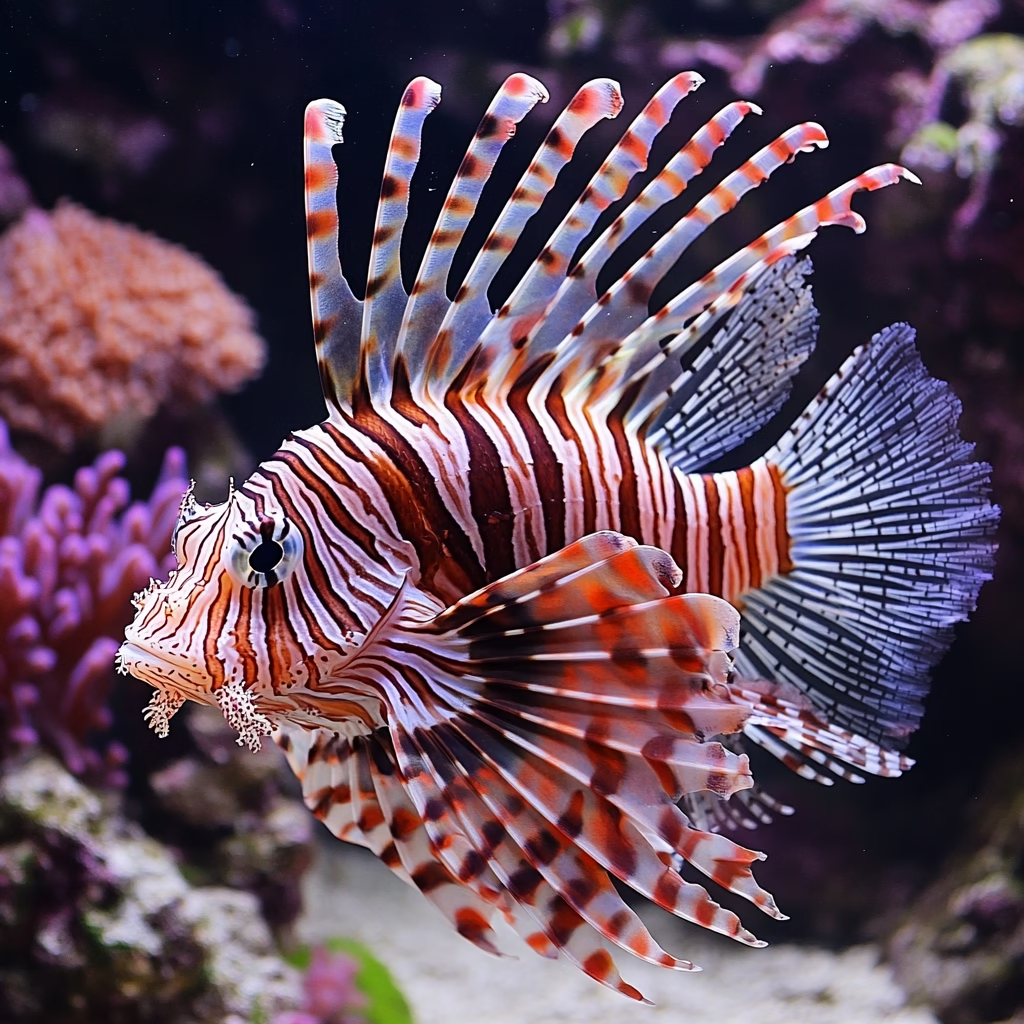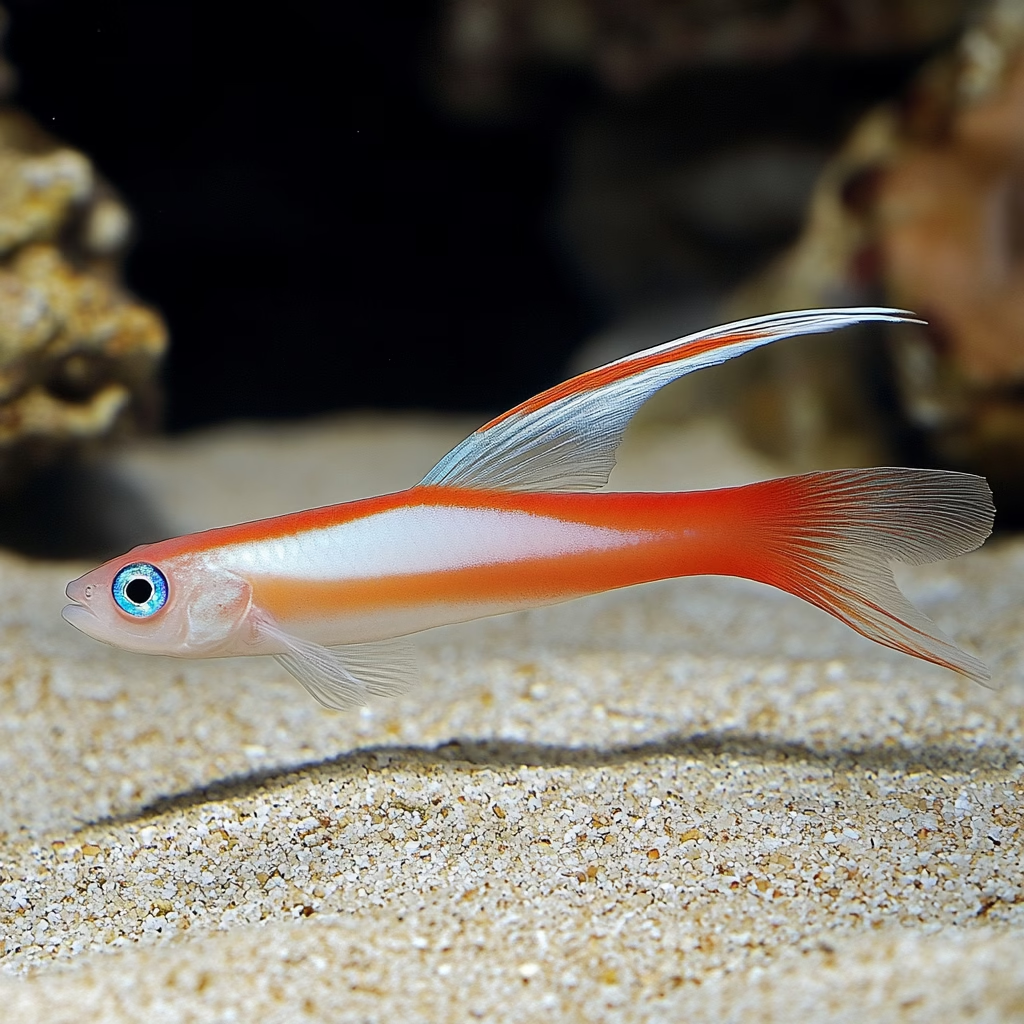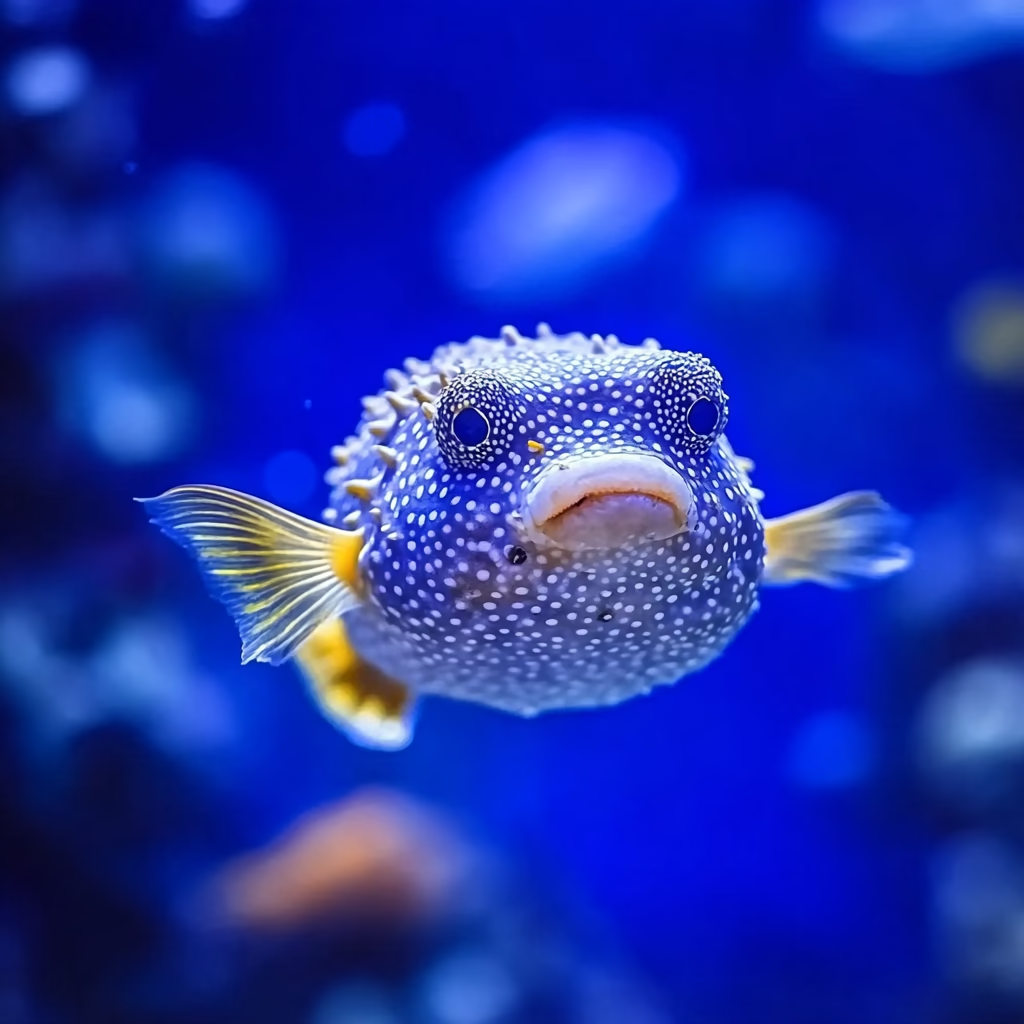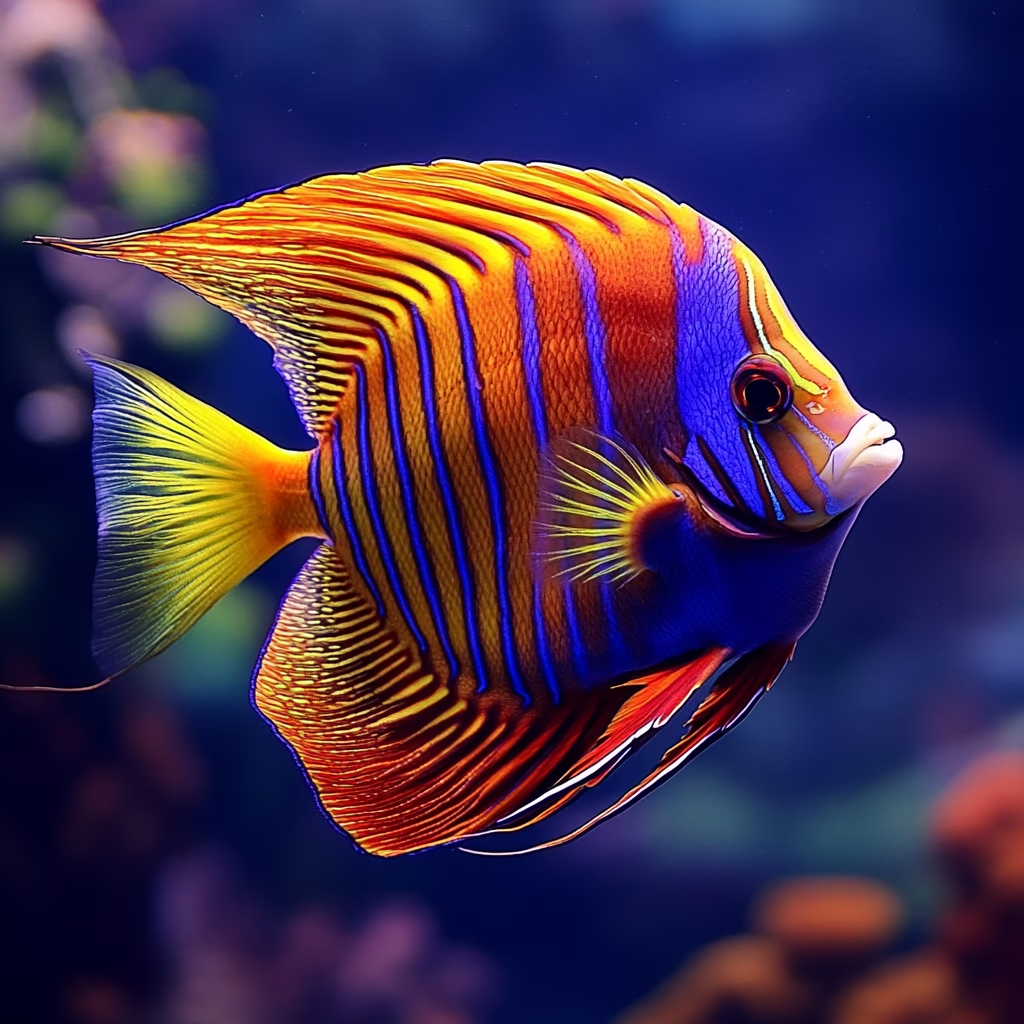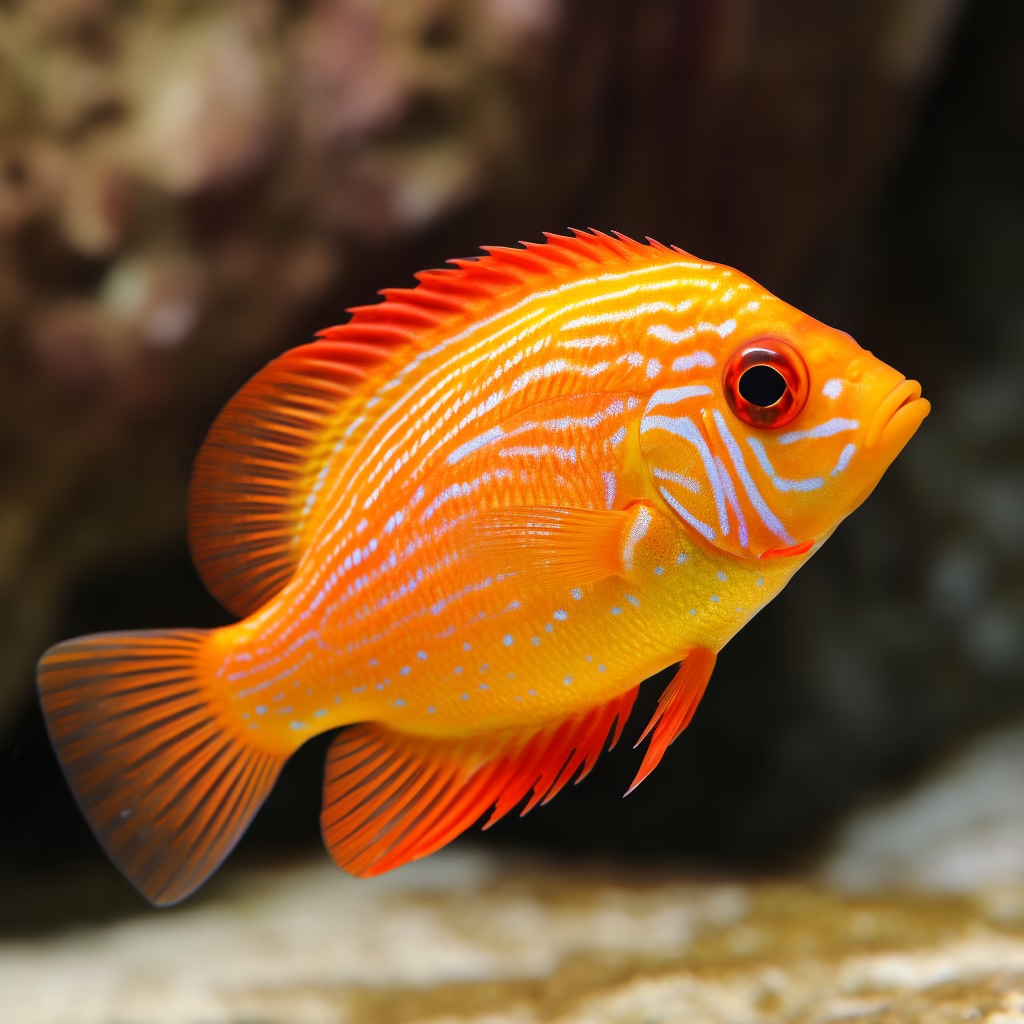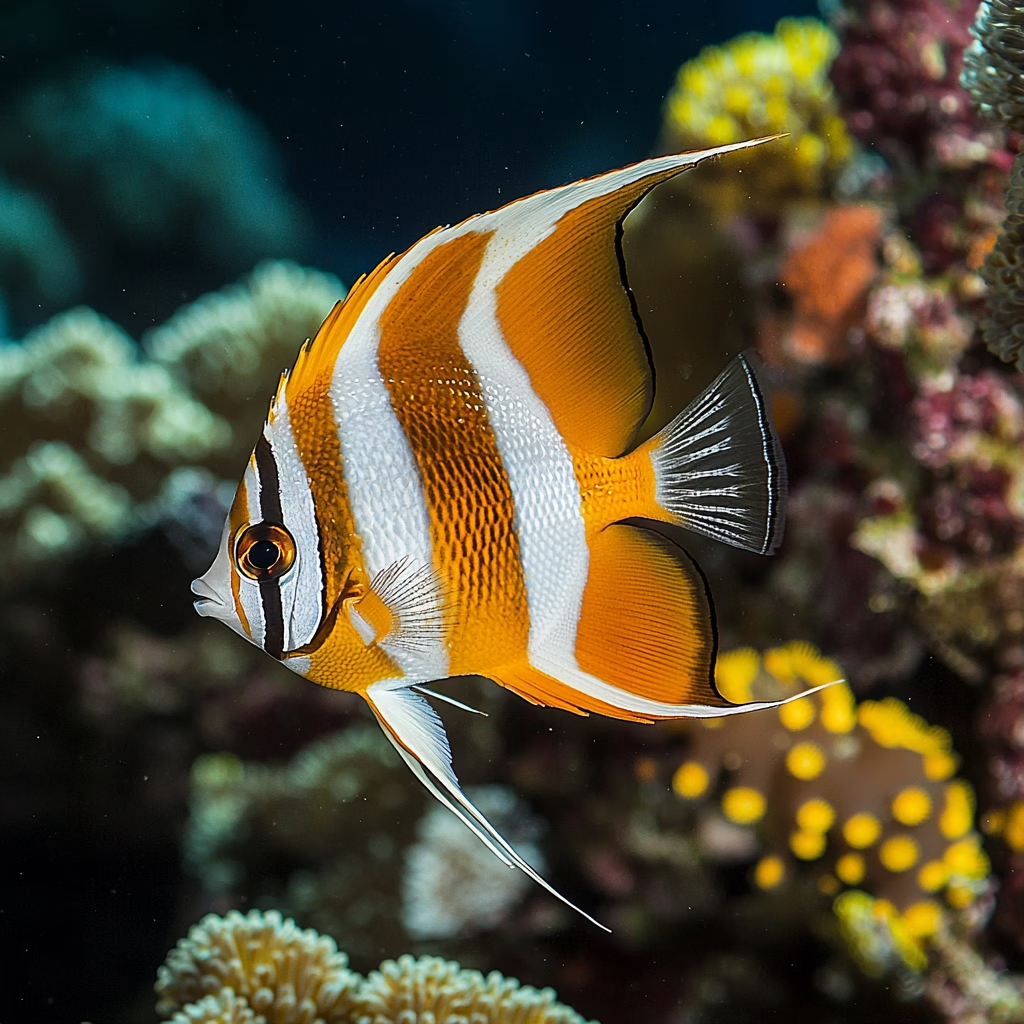The Pinktail Triggerfish (Melichthys vidua), also known as the Pinktail Durgon, stands as one of the most visually striking members of the triggerfish family. With its distinctive coloration, fascinating behavior patterns, and impressive hardiness, this species has become increasingly popular among experienced marine aquarists looking to add both beauty and character to their saltwater setups. This comprehensive guide explores everything you need to know about the Pinktail Triggerfish—from its natural habitat and appearance to proper care requirements and compatibility considerations.
Natural Habitat and Distribution of the Pinktail Triggerfish
The Pinktail Triggerfish is native to the tropical waters of the Indo-Pacific region, with populations extending from the Red Sea and East Africa to the Hawaiian Islands, southern Japan, and throughout much of Micronesia and Polynesia. These fish typically inhabit coral reef environments, particularly along the outer reef slopes and drop-offs at depths ranging from 3 to 60 meters (10 to 200 feet).
In their natural environment, Pinktail Triggerfish are often found swimming in the water column above reefs, where they forage for zooplankton, benthic invertebrates, and algae. Unlike some other triggerfish species that spend significant time close to the reef substrate, Pinktails tend to be more free-swimming, occasionally forming loose aggregations with their own kind or other fish species.
Physical Characteristics and Identification
The Pinktail Triggerfish possesses several distinctive features that make it instantly recognizable to marine enthusiasts:
Size and Body Shape
Adult specimens typically reach 8 to 10 inches (20-25 cm) in length in captivity, though they can grow slightly larger in the wild. Like other triggerfishes, they have a laterally compressed, oval-shaped body with a robust build designed for powerful swimming in varied ocean currents.
Coloration Pattern
The most striking aspect of the Pinktail Triggerfish is its dramatic coloration:
- A deep, uniform bluish-black to charcoal-gray body
- Bright pink to reddish-pink tail (caudal fin) that provides stark contrast to the dark body
- Thin, electric blue lines running along the bases of the dorsal and anal fins
- A slightly lighter face with subtle blue markings around the mouth and gill plates
Distinctive Triggerfish Features
As a member of the Balistidae family, the Pinktail Triggerfish possesses the characteristic features of all triggerfishes:
- A robust first dorsal spine that can be “locked” upright for defense
- Small eyes set high on the head
- A mouth with strong, chisel-like teeth adapted for crushing hard-shelled prey
- Reduced gill openings and the ability to “waddle” using their pectoral fins
This combination of features makes the Pinktail Triggerfish not only beautiful but also highly adapted to its reef environment.
Aquarium Requirements for Healthy Pinktail Triggerfish
Creating an optimal environment for a Pinktail Triggerfish requires careful attention to several key factors:
Tank Size and Setup
Due to their active swimming behavior and eventual adult size, Pinktail Triggerfish require spacious accommodations:
- Minimum tank size: 180 gallons (680 liters) for a single specimen
- Larger systems (250+ gallons) preferred for long-term care
- Strong water movement provided by powerheads or circulation pumps
- Open swimming space in the mid to upper water column
- Robust rockwork with caves and overhangs for security
- Secure lid to prevent jumping or escape attempts
Water Parameters
Maintaining stable, high-quality water conditions is essential:
- Temperature: 75-82°F (24-28°C)
- Salinity: 1.023-1.025 specific gravity
- pH: 8.1-8.4
- Alkalinity: 8-12 dKH
- Calcium: 400-450 ppm
- Nitrate: Below 10 ppm
- Phosphate: Below 0.03 ppm
Filtration and Maintenance
A comprehensive filtration system capable of handling the significant bioload produced by triggerfish is necessary:
- Robust protein skimming to remove dissolved organic compounds
- Substantial mechanical filtration to trap particulate waste
- Efficient biological filtration to process ammonia and nitrites
- Weekly water changes of 10-15% to maintain water quality
- Regular testing of water parameters to ensure stability
Diet and Nutrition for Pinktail Triggerfish
In the wild, Pinktail Triggerfish are opportunistic omnivores with a diet consisting of zooplankton, benthic invertebrates, algae, and occasionally small fish. In captivity, they should receive a varied diet that includes:
Primary Diet Components
- High-quality marine pellets formulated for carnivorous fish
- Frozen foods such as mysis shrimp, krill, and chopped seafood (shrimp, squid, clams)
- Fresh or frozen chopped seafood (occasional supplementation)
- Nori or other prepared seaweed sheets (to provide vegetable matter)
Feeding Schedule
- 2-3 small feedings daily for juvenile specimens
- 1-2 daily feedings for adults
- Occasional fasting day (once per week) to prevent obesity
Providing variety in the diet not only ensures proper nutrition but also stimulates natural foraging behaviors. Using feeding tongs or target feeding techniques can help ensure the Pinktail Triggerfish receives adequate nutrition, especially in community settings where more aggressive feeders might otherwise dominate.
Behavior and Temperament Considerations
The Pinktail Triggerfish displays a fascinating mix of behaviors that make it both challenging and rewarding to keep:
General Behavior Patterns
- Active, almost constant swimming throughout the water column
- Curious nature with a tendency to investigate new objects in the tank
- Intelligent problem-solving abilities, including learning to recognize their caretakers
- Playful interactions with enrichment items like floating toys or mirrors
- Tendency to rearrange aquascape elements and substrate to their liking
Temperament Concerns
While generally less aggressive than many other triggerfish species, Pinktails still possess a territorial streak that becomes more pronounced with age:
- Moderate aggression toward similar-shaped or similarly colored fishes
- Potential for harassing slower, more peaceful tank mates
- Occasional nipping of ornamental invertebrates and corals
- Increased territorial behavior during breeding seasons or when establishing dominance
Their personality can vary significantly between individuals, with some specimens remaining relatively peaceful throughout their lives while others become increasingly territorial with maturity.
Tank Mate Compatibility
Selecting appropriate companions for a Pinktail Triggerfish requires careful consideration:
Suitable Tank Mates
- Large, assertive angelfish (Emperor, Queen, Blue-faced)
- Robust wrasses (Thalassoma species, Bird wrasses)
- Fast-swimming tangs and surgeonfish
- Other similarly-sized, non-competing triggerfish species (rarely)
- Large butterflyfishes
- Moray eels (certain species)
- Lionfish (in very large systems)
Incompatible Tank Mates
- Small, shy fish that may be intimidated or harassed
- Slow-moving bottom-dwellers vulnerable to nipping
- Ornamental shrimps, crabs, and most mobile invertebrates
- Delicate corals, especially LPS and soft corals
- Smaller, less aggressive triggerfish species
- Fish with long, flowing fins that might attract nipping
Introductions should always be done carefully, with the Pinktail Triggerfish being among the last additions to an established system whenever possible.
Reef Compatibility Considerations
The Pinktail Triggerfish is generally considered non-reef safe, though individual temperaments can vary:
Potential Reef System Issues
- May sample or nip at coral polyps out of curiosity
- Can disturb sessile invertebrates while searching for food
- May uproot corals or dislodge rocks while rearranging the aquascape
- Sometimes picks at clam mantles or other bivalve tissues
In rare cases, particularly well-behaved individuals have been successfully kept in reef systems with mostly SPS (small-polyped stony) corals positioned well above the substrate, but this represents the exception rather than the rule. The Pinktail Triggerfish is best suited to fish-only or fish-with-live-rock aquariums where their natural behaviors won’t damage valuable invertebrates.
Health Considerations and Common Issues
Pinktail Triggerfish are generally robust and disease-resistant when maintained in proper conditions, but they can experience several health concerns:
Common Health Issues
- Lateral Line Erosion: Often related to poor water quality or vitamin deficiencies
- Marine Ich (Cryptocaryon irritans): While somewhat resistant, they can still contract this common parasite
- Marine Velvet (Amyloodinium ocellatum): Potentially fatal parasitic infection requiring prompt treatment
- Nutritional Deficiencies: Can occur with imbalanced or monotonous diets
- Bacterial Infections: Often secondary to physical injuries or stress
Preventative Health Measures
- Quarantine all new specimens for 3-4 weeks before introduction
- Maintain excellent water quality through regular maintenance
- Provide a nutritionally complete diet rich in vitamins and minerals
- Minimize stressors through appropriate tank size and compatible tank mates
- Regular observation for early signs of illness or behavioral changes
Availability and Selection Tips
When seeking to acquire a Pinktail Triggerfish, consider the following guidance:
What to Look For
- Clear, bright eyes without cloudiness
- Undamaged fins with no signs of rot or fraying
- Active swimming behavior without labored breathing
- Good body condition without sunken areas or emaciation
- Clean gill plates without excessive rapid breathing
- Willingness to accept food when offered
Acclimation Process
The acclimation process for new specimens should be slow and methodical:
- Drip acclimation over 45-60 minutes
- Dim lighting during initial introduction
- Feeding withheld for 24 hours post-introduction
- Careful observation during the first week
Conclusion: The Rewards of Keeping Pinktail Triggerfish
The Pinktail Triggerfish offers experienced marine aquarists a compelling combination of striking appearance, engaging personality, and relative hardiness compared to many other specialized reef fishes. While their keeping presents certain challenges particularly regarding tank size and compatibility concerns the rewards of maintaining these magnificent fish are substantial.
Their intelligent, inquisitive nature creates opportunities for interaction and enrichment that few other marine species can match. With proper setup, nutrition, and care, a Pinktail Triggerfish can thrive in captivity for 8-12 years or more, serving as a captivating centerpiece in a well-designed marine aquarium.
For the dedicated marine hobbyist willing to accommodate their specific needs, the Pinktail Triggerfish represents one of the most visually stunning and behaviorally fascinating fishes available in the aquarium trade a true living jewel of the tropical oceans that brings a splash of the wild reef’s vitality and beauty into the home aquarium.

